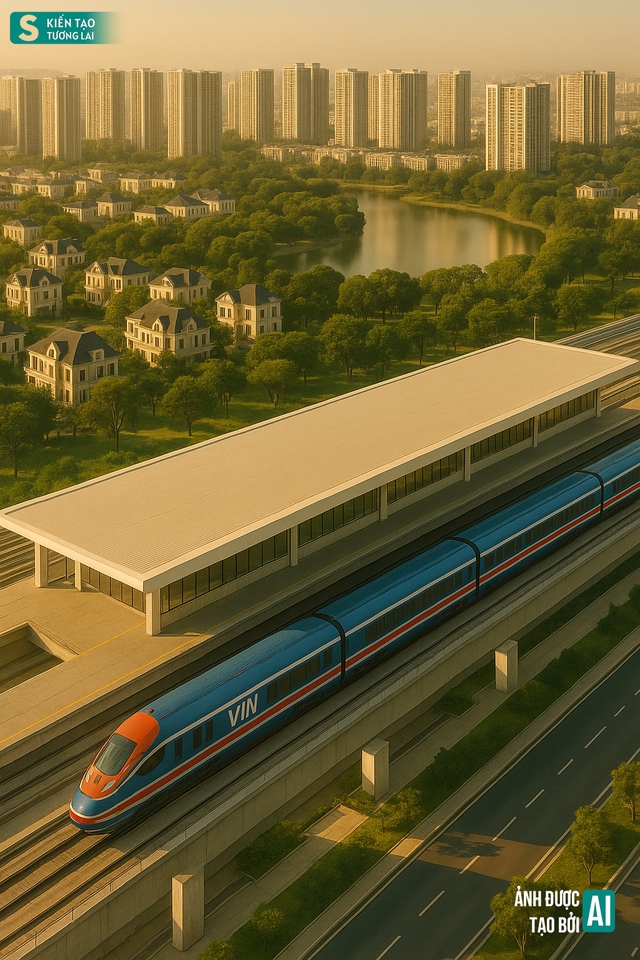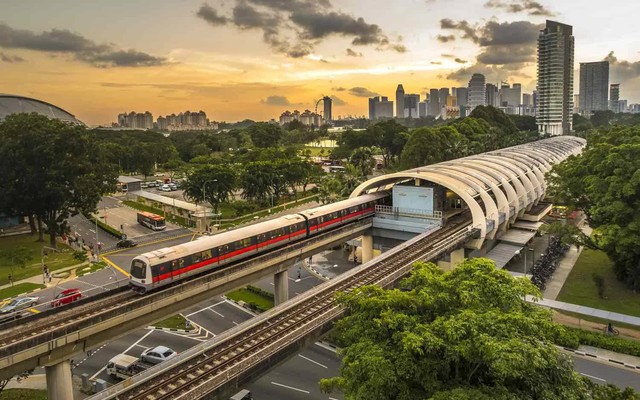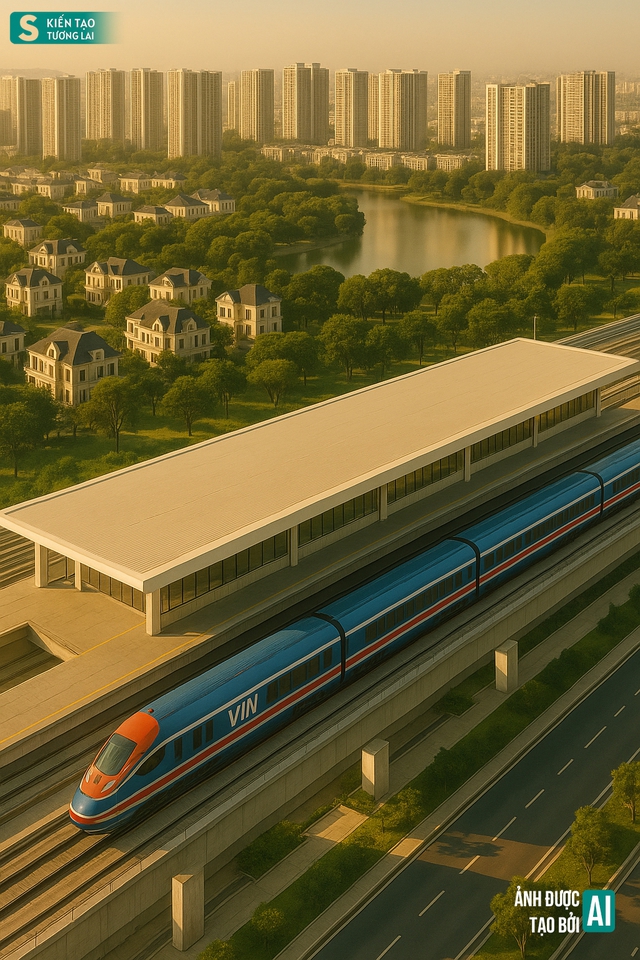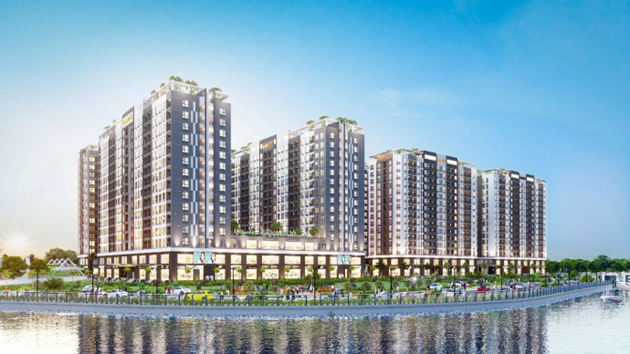VinSpeed Proposes High-Speed Railway Project with a Focus on TOD Urban Development
On May 14th, VinSpeed, a leading high-speed railway development company, announced its registration to invest in the North-South high-speed railway project. The company aims to commence construction before December 2025 and operate the full route before December 2030.
The proposed project by VinSpeed has a total investment of over 1.5 million billion VND (approximately 61.35 billion USD), excluding compensation and resettlement support costs. The company commits to arranging 20% of the capital (approximately 12.27 billion USD) and proposes to borrow the remaining amount from the State at a 0% interest rate, with a repayment period of 35 years from the disbursement date.
To repay the state-borrowed capital, VinSpeed plans to collaborate with Vingroup and Vinhomes to develop modern urban areas around the stations following the TOD (Transit-Oriented Development) model.
Sparse and outlying areas surrounding the stations will be invested in synchronously, boosting infrastructure, enhancing living standards, and supporting local economic development.

VinSpeed plans to develop modern urban areas around stations following the TOD model (Illustrative image created by AI)
What are the Benefits of the TOD Model?
According to experts, the TOD model is considered a strategic solution to urban transportation issues. Professor Vu Minh Khuong from the Lee Kuan Yew School of Public Policy in Singapore emphasized the urgency of developing urban railway systems in Vietnam’s two largest cities, Hanoi and Ho Chi Minh City, in a seminar last year.
Essential benefits of developing urban railways following the TOD model, as highlighted by Professor Vu Minh Khuong, include: enhancing the foundation for a highly competitive economy based on scale advantages, diversity, and synergy; improving efficiency and compactness in urban development by reducing the pressure to expand urban areas passively and sprawl; and significantly reducing infrastructure investment costs, especially for roads, electricity, water, and telecommunications.
Thoi Nay newspaper cited a specialist’s calculation, showing that with an average energy consumption of 0.12 kWh/passenger/km, urban railways save over seven times more energy per passenger compared to car travel within the city. As the primary energy source for railways is electricity, with potential consumption of biodiesel in the form of bio-diesel, there is a reduction in environmentally harmful emissions.
Additionally, Dr. Vu Hong Truong, Chairman of the Board of Directors and General Director of Hanoi Railway One-Member Limited Company, analyzed: “According to our calculations, if 1 million passengers switch from private vehicles to using urban railways, we can save 394,000 hours of commuting time per day. If 50% of this time is utilized for production and services, we can generate nearly VND 30 billion in social labor productivity and reduce about 100 tons of toxic emissions.”
TOD is a model of urban development that uses transit-oriented development as the basis for urban planning, focusing on transit hubs as population centers and then forming a distributed transportation system (Illustrative clip created by AI)
How have Singapore, Japan, and China Successfully Implemented the TOD Model?
According to a report by Hanoi Television, the TOD model has been effectively implemented in many major cities worldwide. Japan is a pioneer in successfully developing the TOD model based on urban railways. The country has a comprehensive urban railway network covering both urban and rural areas. The Tokyo metropolitan area, with a population of approximately 38 million, boasts nearly 900 stations and transports over 40 million passengers daily on 120 railway lines in the region.
Singapore possesses the largest and most efficient public transportation system globally, with its urban railway system being the second oldest in Southeast Asia. Currently, the Singapore MRT has 84 operational stations, with a total system length of 130km, transporting two million passengers daily. It serves as the backbone of the country’s public transportation system.
In Tokyo and Singapore, the TOD model has led to impressive results, with 60-70% of commuters opting for public transportation.

Singapore’s public transport infrastructure is modern and efficient (Photo: AFP/Kinh tế đô thị)
In China, the urban railway system serving the Beijing metropolitan area currently comprises 27 operational lines, including medium- and low-speed maglev trains and modern trams. It spans 12 inner districts of Beijing and Langfang city in Hebei Province, with a total length of 836 km and 490 stations. Beijing’s urban railway planning effectively utilizes underground, ground-level, and elevated spaces, creating efficient transportation loops and integrating stations seamlessly into the urban fabric.
The Masterplan for a New Urban Area: Revitalizing Binh Quoi – Thanh Da, Ho Chi Minh City
The adjusted planning proposal for the new Binh Quoi – Thanh Da urban area project ensures alignment with the directional development of urban space as per the master plan of Ho Chi Minh City. This project is intricately tied to infrastructure requirements, long-term landscape preservation, and adaptation to climate change.
High-Speed North-South Rail: Aiming for $22 Billion Revenue from Land and Advertising
According to experts, the key to enhancing land value along the North-South high-speed railway lies in embracing the Transit-Oriented Development (TOD) model. This approach focuses on creating urban areas that prioritize public transportation, with the potential to generate an estimated $22 billion in revenue from land development and commercial exploitation along the high-speed rail corridor.
High-Speed North-South Railway: ‘It’s Time to Leverage Private Capital’
“It’s high time we tap into the private sector’s financial resources, dynamism, and strong management skills to embark on the North-South high-speed rail project,” said transport expert Nguyen Xuan Thuy.
The Billionaire’s Vision: A Private Railway from District 7 to Can Gio
The proposed railway project, connecting Ho Chi Minh City and Can Gio, is an ambitious infrastructure development. With a starting point at Nguyen Van Linh Street, between the intersections of Nguyen Thi Thap and Ly Phuc Man in District 7, the route continues on to Nguyen Luong Bang and the Sac Forest. The terminus is envisioned at a 39-hectare site adjacent to the Can Gio sea reclamation urban area project.











![[Photo Essay]: Experts, Managers, and Businesses Unite to Forge a Path Towards Sustainable Green Industry](https://xe.today/wp-content/uploads/2025/07/z678592918-150x150.jpg)


![[Photo Essay]: Experts, Managers, and Businesses Unite to Forge a Path Towards Sustainable Green Industry](https://xe.today/wp-content/uploads/2025/07/z678592918-100x70.jpg)






